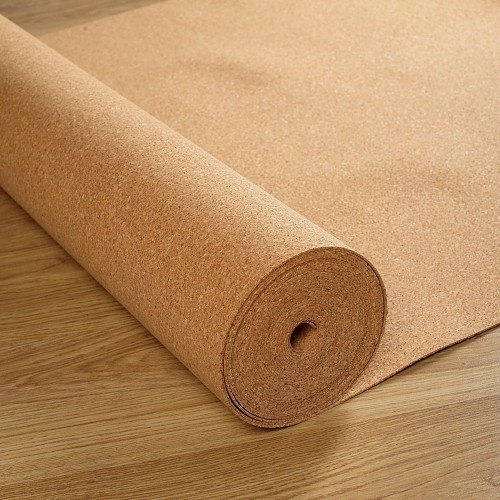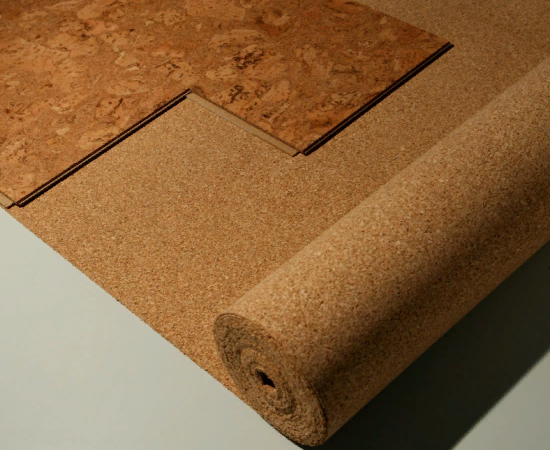+48 535 000 250
Cork Underlayment

Superscript
Cork underlay - what can you expect from its use?
Unique cork for insulation
Cork is a material with unique properties. 100% natural, made of cork oak bark. Plantations of these trees are concentrated in Portugal and other Mediterranean countries. The bark is removed by hand, while the tree itself does not suffer, it is still alive, overgrowing with bark again.
1. Provides high-quality floor laying:
Reduces the load on the locking system;
Protects the coating against existing defects on the substrate;
It prevents the formation of cracks thanks to its anti-slip properties
2. Protects the lining throughout its lifetime:
Protects against local damage thanks to excellent shock absorption and supportive action;
Saves from deformation under the influence of long-term loads;
Provides a protective barrier between the base and the floor covering.




Supet
Laying a cork underlay on an old parquet or linoleum floor
Many who refurbish try to save money by laying a new floor over the old one. Of course it is possible! Indeed, laying a floor is a very laborious, tedious, long and inexpensive work, so in order to eliminate all these costs, most often people find a simpler solution by putting a new coating on top of the old one.
Cork has many advantages, but not when laying over old parquet or linoleum. The idea is that the cork backing is made of cork granules, stuck securely together, but when used on an uneven floor, the granules come apart from each other. Also, the old parquet can be uneven, a large gap has formed somewhere between the parquet floors, and somewhere one parquet protrudes 2-3 mm higher than the other, all this will lead to the rapid destruction of the cork flooring into granules. It won't be cheap.
But often sellers, not knowing all the consequences of a cork underlay, impose it in the store, ensuring the durability, quality and reliability of this lining. Indeed, cork has many advantages, but not for laying on an old parquet or linoleum floor. The idea is that the cork backing is made of cork granules, stuck securely together, but when used on an uneven floor, the granules come apart from each other. Also, the old parquet can be uneven, a large gap has formed somewhere between the parquet floors, and somewhere one parquet protrudes 2-3 mm higher than the other, all this will lead to the rapid destruction of the cork flooring into granules.
A cork underlay can not be laid not only on the old parquet, but also on linoleum. If your linoleum has not hardened in years and is still soft, the cork between the linoleum and floating parquet will collapse even faster than on the old parquet. Using a substrate along with linoleum will also harm your floor, locks will begin to part, cracks and creaks will appear. Cork underlay and linoleum are equivalent to using a thick underlay, which cannot be done with floating floors.